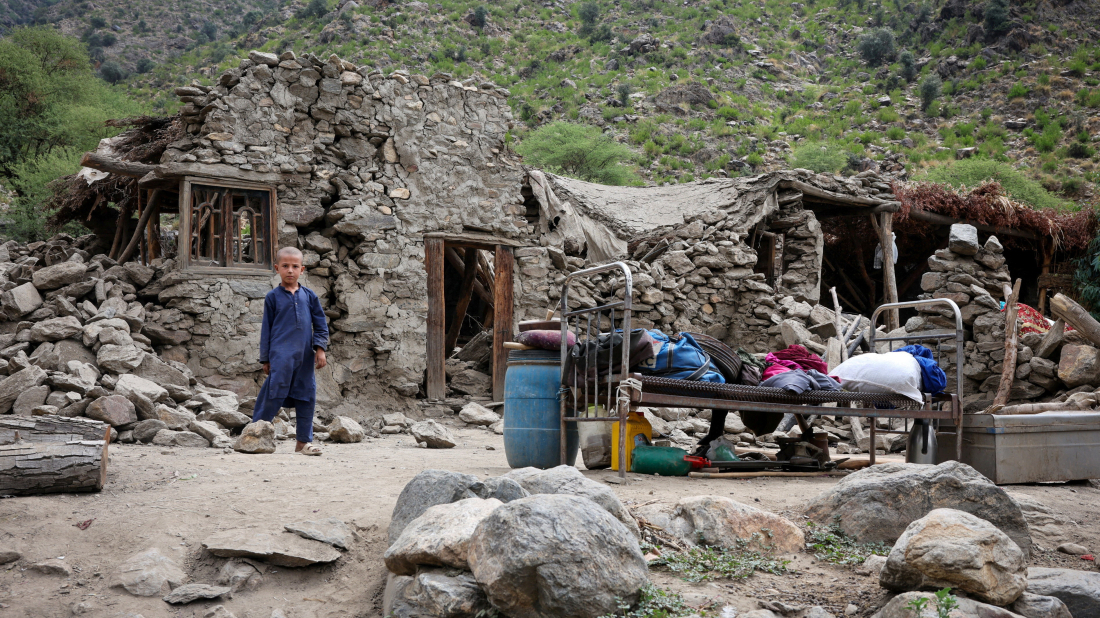U.S. foils ISIS-inspired New Year’s Eve attack
U.S. authorities say they have thwarted an ISIS‑inspired terrorist attack planned for New Year’s Eve in the town of Mint Hill, North Carolina, arr...

Rescue teams have been working to recover bodies from the wreckage of homes destroyed in this week’s earthquakes in Afghanistan, as the window for survivors narrows.
Global aid agencies have warned that funds for food, shelter, and medical supplies are rapidly depleting, leaving those affected facing a grim outlook.
Search operations continued late into Wednesday in the quake-hit mountainous eastern regions, as additional bodies were recovered, the Taliban administration said. The death toll has surpassed 1,457, though exact figures are still being compiled.
“Everything we had has been destroyed,” said Aalem Jan, a resident of Kunar province, the area worst affected. “Our house collapsed, and all our belongings are gone. The only things left are the clothes on our backs.”
The first tremor, measuring magnitude 6, struck on Sunday at a shallow depth of 10 km (6 miles), causing widespread devastation across Kunar and Nangarhar provinces. A second quake of magnitude 5.5 on Tuesday triggered panic and disrupted rescue efforts, sending rocks tumbling down slopes and cutting off access to remote villages.
Authorities reported around 3,400 people injured and more than 6,700 homes destroyed. The United Nations warned that the death toll could rise further, as many remain trapped beneath the rubble.
Humanitarian needs are “vast and growing rapidly,” the International Federation of Red Cross and Red Crescent Societies (IFRC) said, noting that approximately 84,000 people are directly or indirectly affected, with thousands displaced.
In some villages in Kunar province, entire households were obliterated. Survivors frantically searched for loved ones, carrying bodies on woven stretchers, sifting through rubble, and digging graves with pickaxes while awaiting aid.
Footage from Reuters TV showed trucks carrying sacks of flour and men with shovels making their way to remote villages on steep slopes. In locations inaccessible to helicopters, authorities deployed commando units by air.
Resources for rescue and relief remain limited in Afghanistan, a nation of 42 million already weakened by decades of war, poverty, and declining aid. Harsh weather has further complicated operations.
Funding cuts to foreign aid under U.S. President Donald Trump, combined with donor frustration over the Taliban’s restrictions on women and limits on aid workers, have exacerbated the country’s isolation.
The World Health Organisation highlighted a funding shortfall of $3 million, warning that supplies of medicines, trauma kits, and essential items must be maintained amid soaring demand.
The U.N. World Food Programme can provide support for survivors for only four more weeks, according to its country head, John Aylieff.
Jacopo Caridi of the Norwegian Refugee Council urged donors to commit to long-term support, stressing the need to go beyond emergency aid to give Afghans a chance at a sustainable future.
“The earthquake should serve as a stark reminder: Afghanistan cannot be left to face one crisis after another alone,” he said.
Dozens of people are feared dead and around 100 others injured after an explosion tore through a crowded bar during New Year’s Eve celebrations at the Swiss ski resort of Crans-Montana, authorities said.
Russian athletes will not be allowed to represent their country at the Milano Cortina Winter Olympics even if a peace deal is reached with Ukraine, International Olympic Committee President Kirsty Coventry said in an interview with an Italian newspaper.
At least 47 people were killed and 112 injured after a fire broke out at a crowded bar in the Swiss ski resort town of Crans-Montana during New Year’s Eve celebrations, Italian Foreign Minister Antonio Tajani told Italian media on Thursday.
India has approved a major arms deal with Israel valued at approximately $8.7 billion, highlighting the deepening defence partnership between the two countries.
A 6.5-magnitude earthquake has struck the southern state of Guerrero in Mexico.
The United Nations on Friday voiced serious concern over the deteriorating humanitarian situation in Sudan, warning that rising violence is increasingly affecting civilians.
Ukrainian officials reported on Friday that thousands of children and their parents were evacuated from frontline areas in the Zaporizhzhia and Dnipropetrovsk regions as Russian forces continued to advance.
Yemen’s southern separatists have announced plans to hold a referendum on independence from the north within two years, a move likely to further escalate tensions as Saudi-backed government forces seek to retake territory seized by the group last month.
A 6.5-magnitude earthquake has struck the southern state of Guerrero in Mexico.
Suhail Shaheen, Afghanistan’s ambassador in Doha, has again urged the United Nations to transfer Afghanistan’s seat at the UN to the Taliban-led administration, arguing the current arrangement no longer reflects realities in the country.
You can download the AnewZ application from Play Store and the App Store.

What is your opinion on this topic?
Leave the first comment